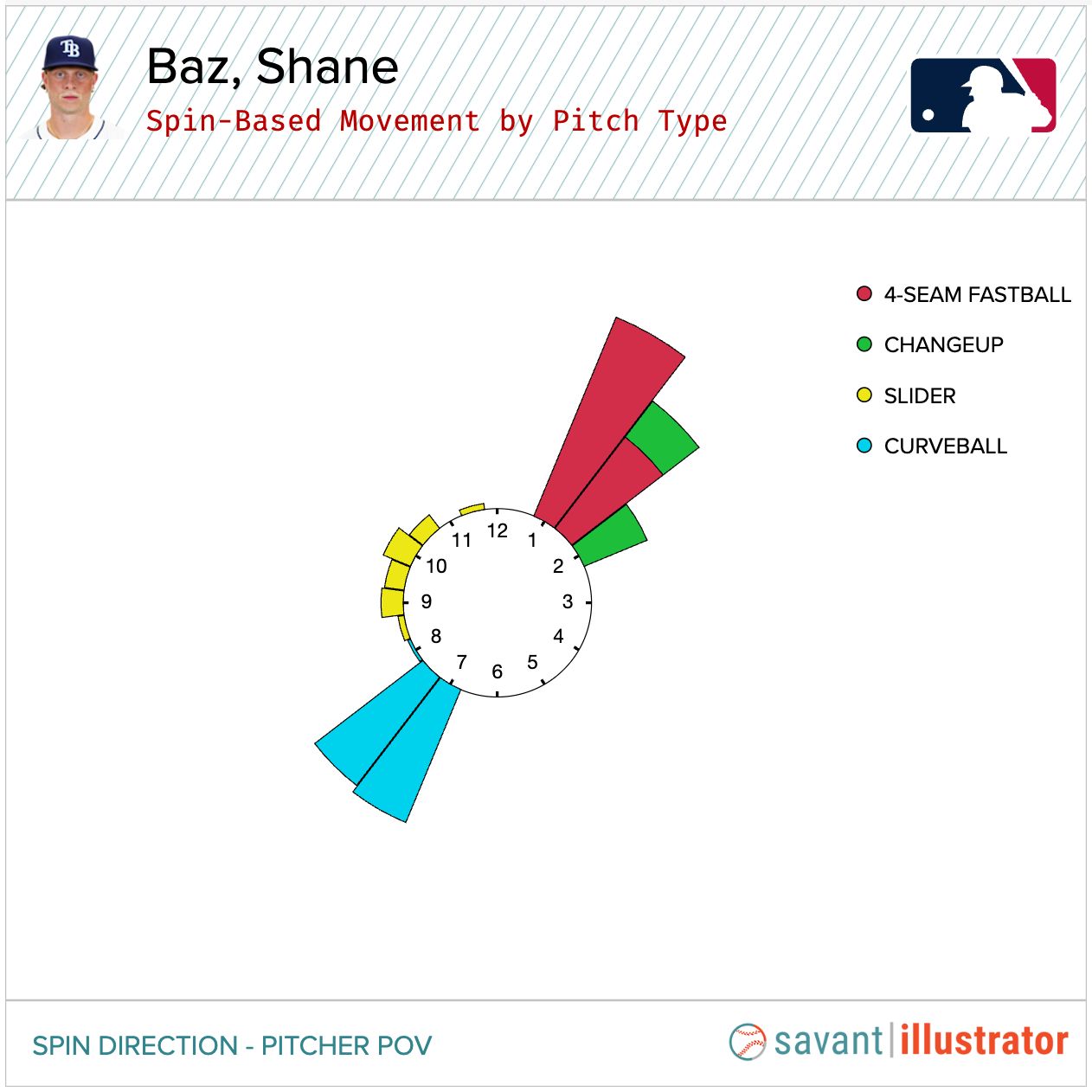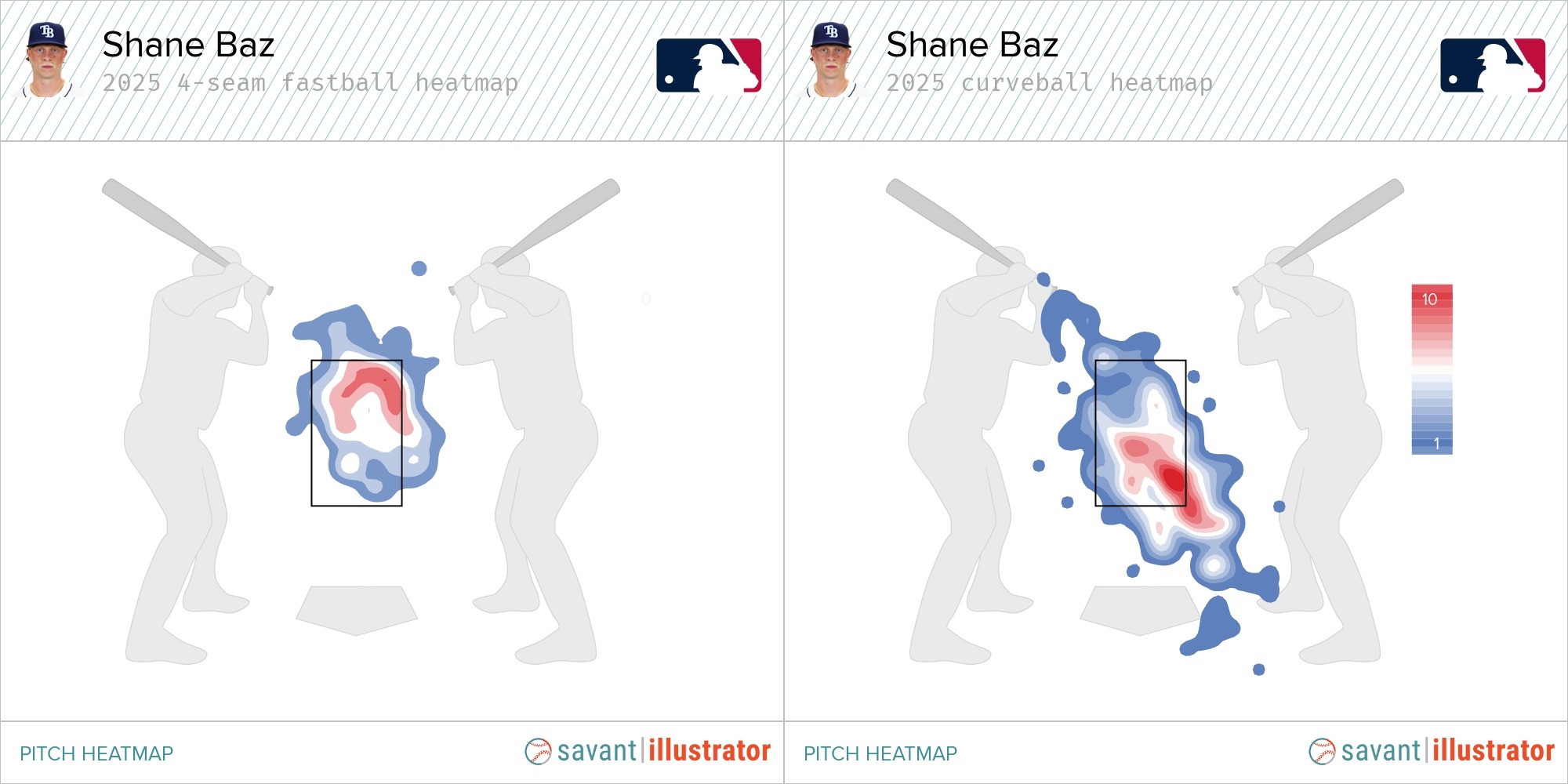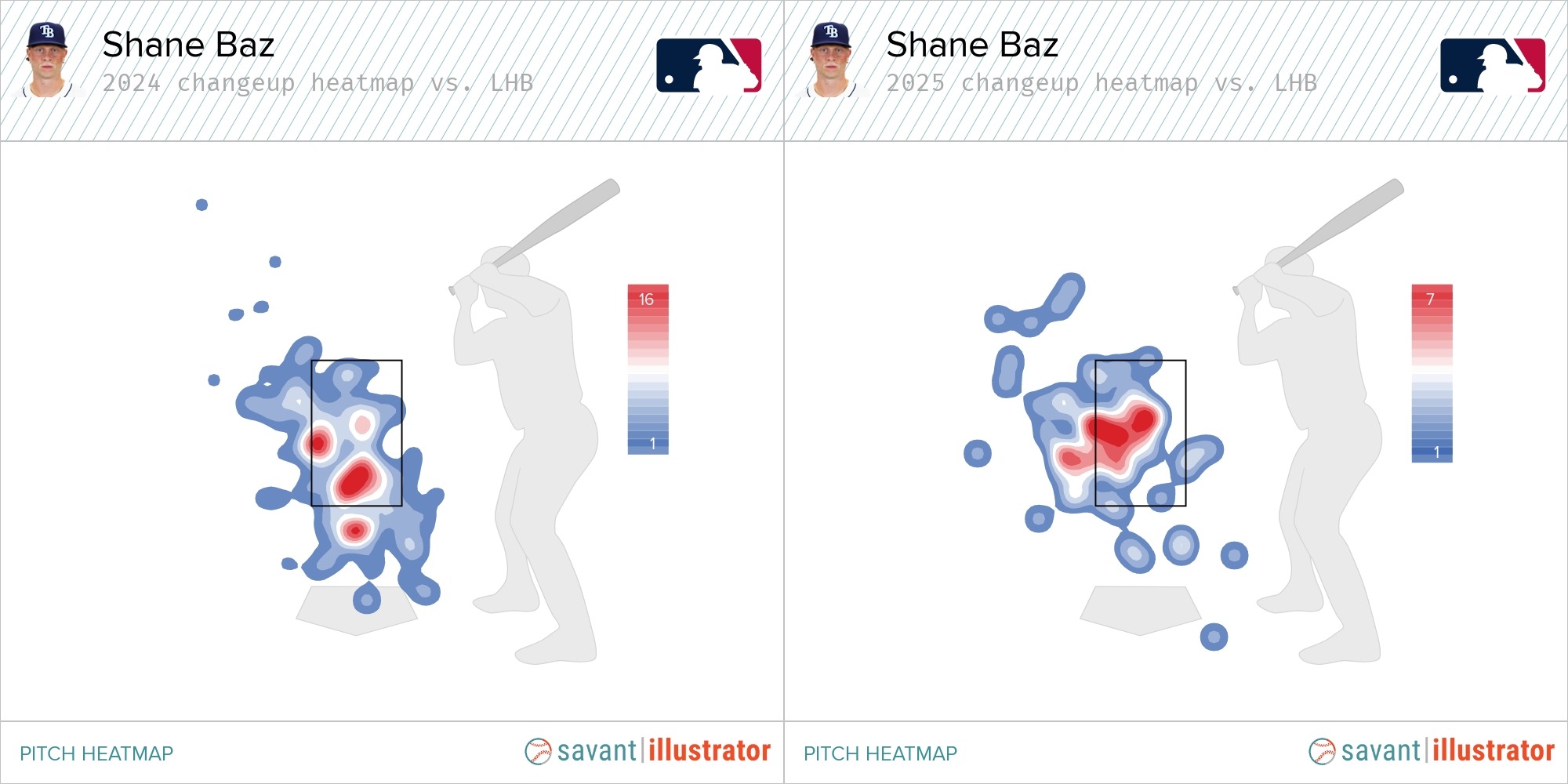We’ve waited for this version of Shane Baz for a while.
Baz entered the 2022 season as the Rays’ top prospect, and the 12th-ranked prospect in all of baseball, per MLB Pipeline. But recurring elbow issues limited Baz to just nine regular-season starts between his MLB debut in September 2021 and his season debut last July -- which came 727 days after his previous Major League start.
Upon returning, Baz took his turn every fifth day, making 14 starts while pitching to a 3.06 ERA. Most importantly, he entered the offseason healthy -- laying the groundwork for more success in 2025.
“We could put our curiosity to work in Spring Training with that blank canvas that Spring Training is,” Rays pitching coach Kyle Snyder told MLB.com’s Adam Berry.
Five starts into the 2025 season -- he faces the Royals on Thursday afternoon in Tampa -- Baz and the Rays are reaping the benefits. Only Paul Skenes and Logan Gilbert have a lower expected ERA (xERA) than Baz’s 2.44 mark, which fully backs up his actual ERA of 2.45.
Baz has only grown more important amid the absence of ace Shane McClanahan, who suffered a triceps injury in Spring Training. Tampa Bay is 4-1 in Baz's five starts, and 10-14 otherwise.
Baz’s ranks among qualified SPs, 2025
- 1st in xBA against (.177)
- T-3rd in xwOBA against (.257)
- T-3rd in xERA (2.44)
- 7th in Zone% (56.8%)
- 8th in K% (31.6%)
Baz’s breakout -- long a question of health, not stuff -- rests on the back of one of the game’s prettiest pitches.
“The curveball,” Snyder said, “has totally taken over.”
Baz’s curveball has a little bit of everything: At 83.8 mph, it’s nearly 4 mph harder than that of the average big league right-hander. It also has exceptional two-plane movement, meaning it breaks both vertically and horizontally. Combined, those factors make the pitch an anomaly -- and rather difficult to hit.
Among 168 qualified curveballs thrown this season, only two match Baz’s combination of velocity and drop.
Curveballs thrown at 83+ mph with 53+ in. of drop, 2025
- Hunter Brown (HOU): 84.2 mph // 55.1" drop // -16.0" induced break
- Justin Slaten (BOS): 85.0 mph // 54.4" drop // -16.1" induced break
- Shane Baz (TB): 83.8 mph // 53.3" drop // -14.1" induced break
Baz’s curveball has less time to break on its way to the plate than slower curveballs, yet it still has outlier vertical movement. He gets an extra 3.9 inches of drop on his curveball compared to other curveballs at his velocity. Batters aren’t used to that combination of speed and drop, which helps explain why they’re hitting just .149 against it.
This isn’t just a show-me pitch. When Baz tossed seven scoreless innings against the Padres last Friday, he used his curveball 40.2% of the time, setting a new single-game career-high with 39 curveballs. In at-bats ending with a curveball, Padres hitters went just 3-for-15 (all singles) with five strikeouts.
Entering the game, San Diego touted the third-highest OPS against curveballs of any team in the Majors. That didn’t faze Baz.
The comfort level stems from Spring Training, when a normal ramp-up allowed him to tinker with the pitch across three starts. Prior to 2025, he hadn’t appeared in a Spring Training game since 2021.
“The more reps I got, the more comfortable I got with it,” Baz said. “It just kind of developed on its own.”
Now, it’s a pitch that Baz can deploy whenever. On two-strike curveballs, batters are just 4-for-36 with 22 strikeouts. It’s an early-count option, too: Only Jake Irvin of the Nationals has generated more called strikes with his curveball than Baz.
The 4-seamer matters, too
The curveball is a weapon on its own. But it’s a wipeout offering because of the interplay between the curveball and four-seamer.
“That fastball/curveball combination was pretty lethal,” Rays manager Kevin Cash said after Baz's last start.
Why? Spin plays a pivotal role. Baz’s four-seam spin is 1:15, while his curveball spin is 7:15. That means his four-seamer and curveball are mirror images of one another; they’re 6:00, or 180 degrees, apart. The curveball spins in the exact opposite direction from his fastball. You can see that relationship here, looking at the direction of Baz's pitches upon release.

Since the two pitches are spinning on the same axis, hitters have a difficult time telling them apart by looking at the seam orientation. That often leads to poor swing decisions -- and poor swings, too.
When Baz is at his best, he’s maximizing that relationship, working the four-seamer off his curveball and vice versa. One sits up in the zone, the other lives down, disrupting the hitter’s eye level.

Baz’s four-seamer is also crisper than it was last year, averaging 96.7 mph. That’s a 1.1 mph bump, good for one of the largest year-to-year velocity gains of any starting pitcher this season.
Baz attributes the velocity gain to mechanical changes that he worked on over the offseason. That’s led to pitches like this 99.7 mph laser that Baz elevates and darts past Kristian Campbell.
Don't forget about the changeup
While 78% of Baz’s pitches are either four-seamers or curveballs -- up from 68% in 2024 -- he still has another weapon. The changeup is a reliable third offering, deployed 28.1% of the time to left-handed hitters.
In the offseason, the Rays altered Baz’s changeup grip. From 2024 to 2025, Baz added 3.6 inches of arm-side run to his changeup, transforming a pitch that previously had roughly average horizontal movement.
Baz’s changeup, 2024 vs. 2025
- 2024: 88.1 mph // 14.4" run // 8.9" drop
- 2025: 89.4 mph // 18.0" run // 8.8" drop
Baz is leaning into the pitch’s new movement, tailing the changeup away from left-handed hitters. That’s a different game plan from last season, when he primarily kept his changeup low in the zone.

Not surprisingly, hitters are having trouble making contact: The changeup is running a 37.5% whiff rate, up from 27.6% in 2024. Left-handed hitters have to worry about three different attack zones -- elevated heat, a hard curveball breaking in on their hands, and a changeup zipping away from them.
It’s another example of why so many of Baz’s improvements come back to command. There’s more to command than avoiding walks -- Baz’s 7.9 BB% is roughly in line with his career average. This year, he’s been adept at using his four-seamer to set up the rest of his arsenal, whether that’s the curveball down or the changeup away.
“The command of this fastball and how that affects the rest of his arsenal globally, he’s really taken a big step forward,” Snyder said.
This didn’t just happen overnight. For instance, Baz and the Rays have worked at length to clean up the right-hander’s mechanics. After the 2020 season, Baz began throwing exclusively from the stretch as a way to minimize the number of moving parts in his delivery.
Finally healthy, we’re able to see the fruits of all his labor.
MLB.com’s Adam Berry contributed to the reporting of this story.
